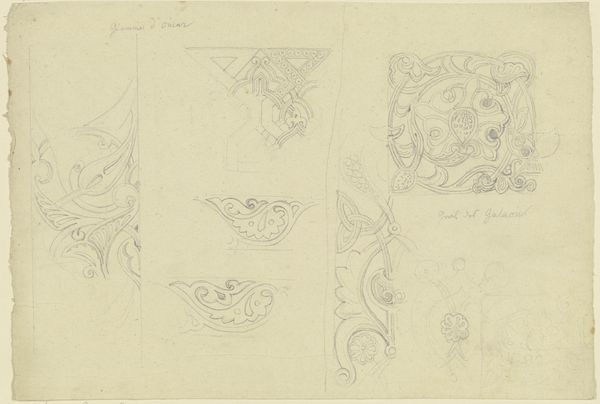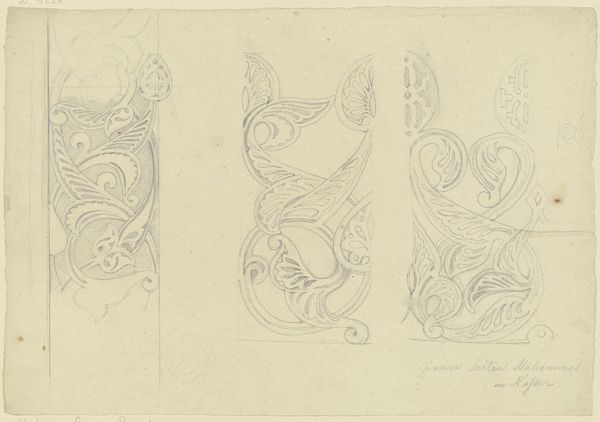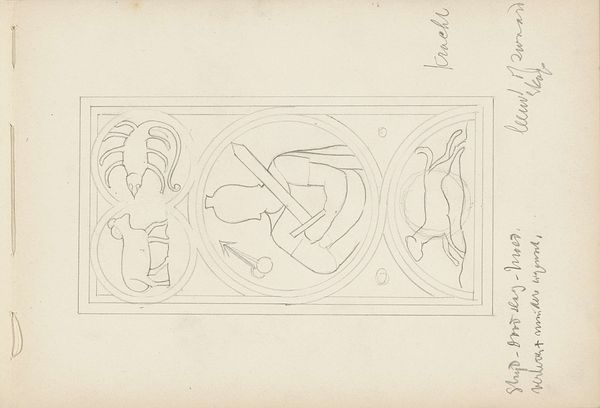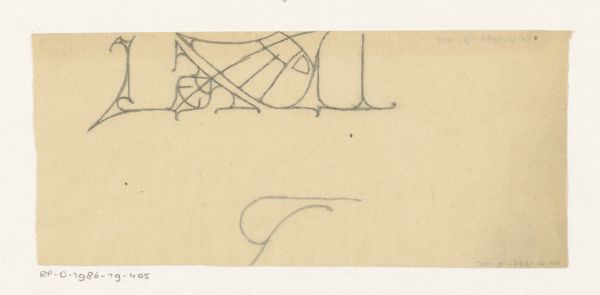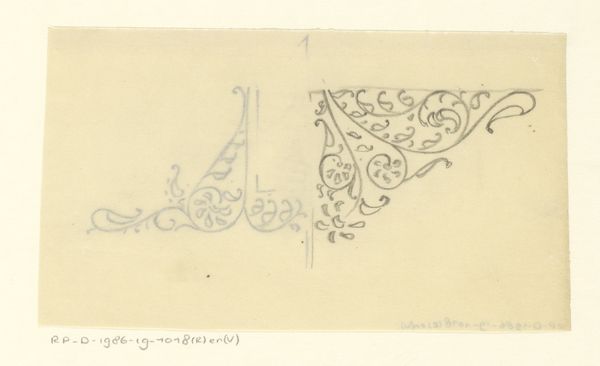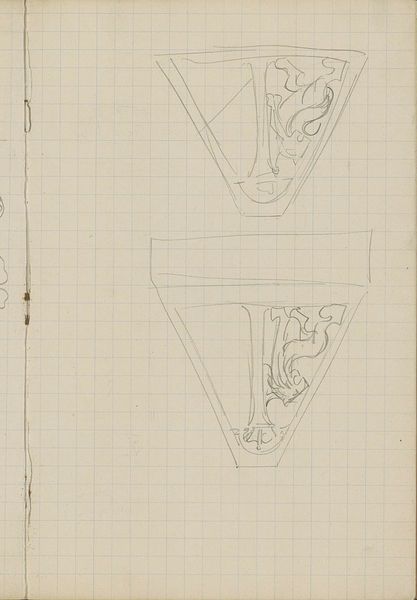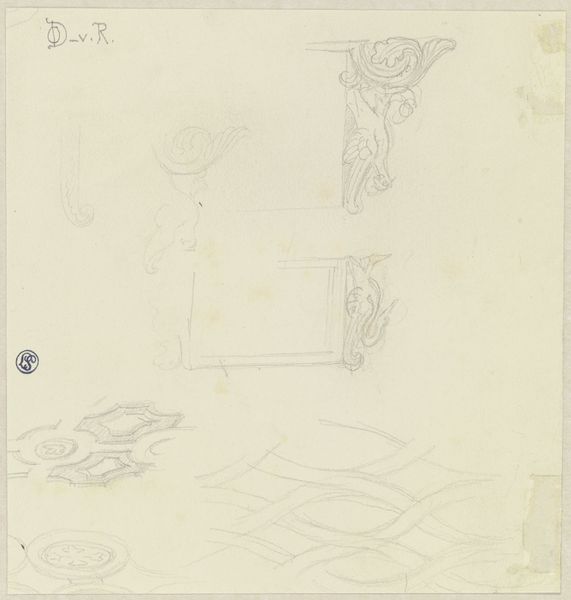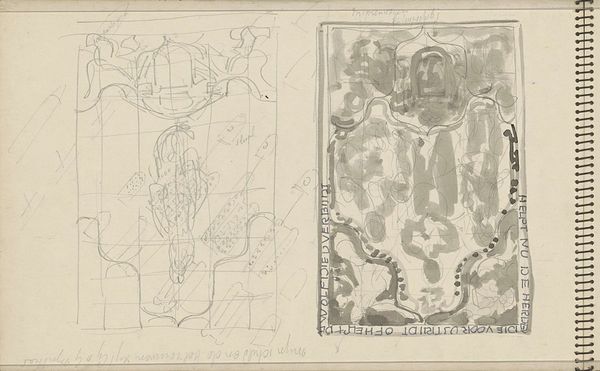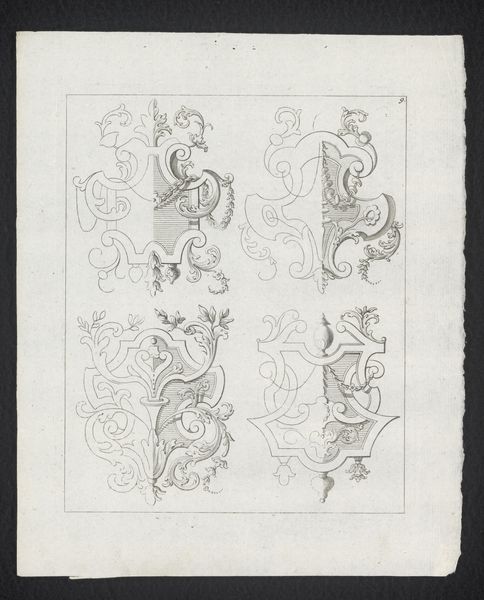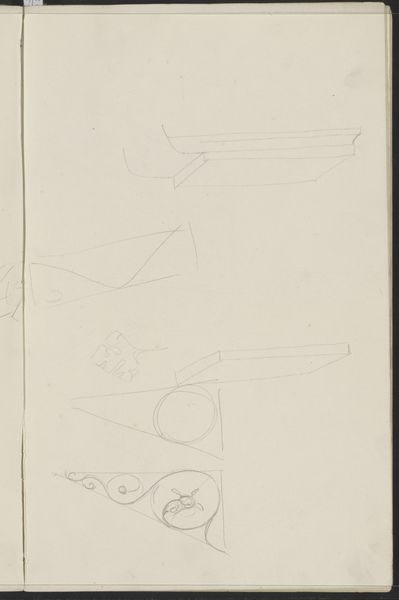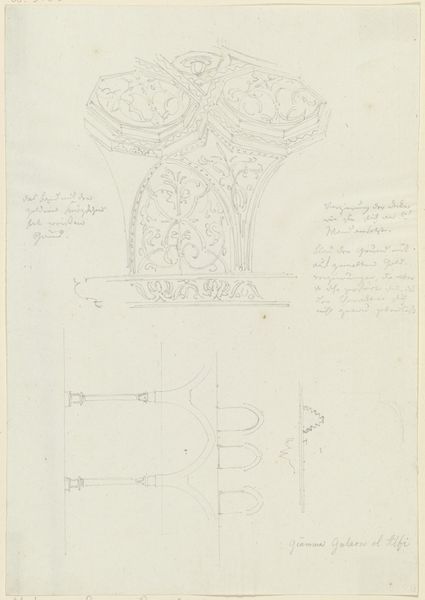
drawing, pencil
#
drawing
#
geometric
#
pencil
#
line
#
islamic-art
Copyright: Public Domain
Curator: Here we have a pencil drawing from 1829 titled "Vegetal Pattern" by Friedrich Maximilian Hessemer, currently held in the Städel Museum. The delicate lines depict what appear to be segments of an elaborate, geometrically precise design. Editor: My immediate response is… calm. The light pencil strokes and repeating shapes evoke a sense of order, but the organic details within feel incredibly alive. Curator: Hessemer was deeply interested in applying geometry to ornamental design, reflecting a broader 19th-century fascination with the aesthetics of so-called 'exotic' cultures, specifically here an interpretation of Islamic art. Editor: The concept of exoticism always interests me—how often cultural appreciation carries shadows of colonial dynamics. Do we know the extent to which Hessemer directly engaged with authentic Islamic artistry versus approaching this subject through a Western, and inevitably biased, lens? Curator: His pattern indeed blends a Romantic sensibility with a somewhat idealised geometry. This kind of stylized flora connects, for instance, to similar designs we can observe throughout Renaissance and Neoclassical art; a continuous visual language constantly reinterpreting symbolic forms. Note the careful symmetry and rhythmic repetition: are these elements that resonate psychologically across cultures? Editor: Symmetry speaks to universal desire for harmony and structure, though it’s always crucial to recognise the potential cultural biases shaping perceptions of “beauty”. Even patterns become statements. What’s excluded from this idealized representation is as crucial as what Hessemer includes. What political, economic, and social contexts are deliberately flattened or obscured here, for instance? Curator: True, and those omissions point to an unspoken narrative of influence and cultural interpretation that demands investigation. His focus certainly rests on harmony rather than upheaval. But ultimately these kinds of patterns contribute, over centuries, to how cultural symbols become layered, acquiring new levels of cultural meanings. Editor: Absolutely. Seeing this image opens conversations about how images perpetuate, transform, and even sometimes unintentionally, rewrite our understanding of shared histories. Curator: An important observation on visual culture indeed. Thanks for sharing. Editor: Thanks to you. Always fascinating to explore such layered meanings.
Comments
No comments
Be the first to comment and join the conversation on the ultimate creative platform.
